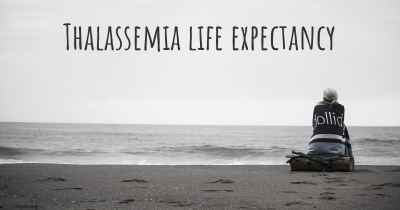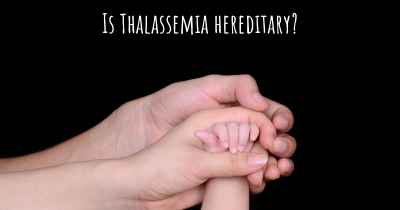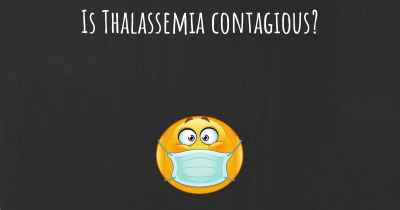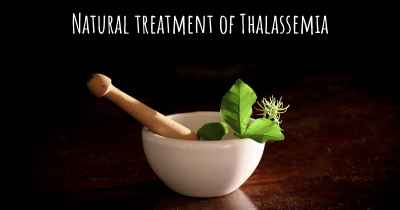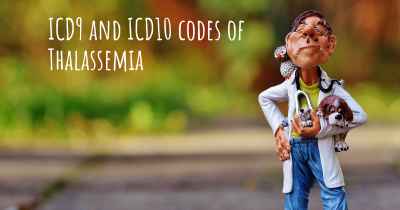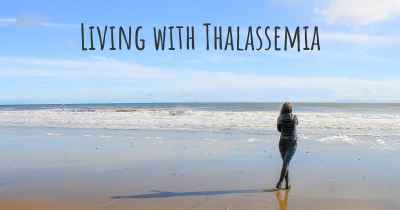What is the history of Thalassemia?
When was Thalassemia discovered? What is the story of this discovery? Was it coincidence or not?
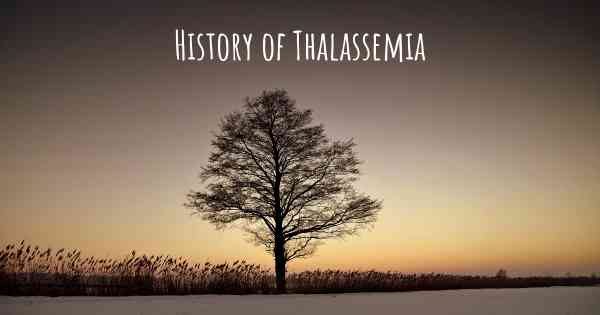
Thalassemia is a genetic blood disorder that affects the production of hemoglobin, the protein responsible for carrying oxygen in red blood cells. It is named after the Greek word "thalassa," meaning sea, as it was first discovered in populations around the Mediterranean Sea. The history of thalassemia dates back to ancient times, but our understanding of the disorder has significantly evolved over the years.
Ancient Origins:
The earliest evidence of thalassemia can be traced back to ancient civilizations such as Egypt and Mesopotamia. In these regions, skeletal remains dating back thousands of years have shown signs of severe anemia, which is a characteristic symptom of thalassemia. However, the true nature of the disorder remained unknown until much later.
Discovery and Classification:
In the early 20th century, medical researchers began to investigate the causes of anemia and discovered that thalassemia was a hereditary condition. The first comprehensive description of thalassemia was published in 1925 by Dr. Thomas Cooley and Dr. Pearl Lee, who identified a severe form of the disorder now known as Cooley's anemia or beta thalassemia major.
Understanding the Genetics:
It wasn't until the 1940s that scientists began to unravel the genetic basis of thalassemia. They discovered that the disorder is caused by mutations in the genes responsible for producing hemoglobin. These mutations disrupt the normal production of hemoglobin chains, leading to an imbalance and reduced functionality of red blood cells.
Global Impact:
Thalassemia is particularly prevalent in regions where malaria is or was endemic, such as the Mediterranean, Middle East, South Asia, and parts of Africa. Researchers believe that the high frequency of thalassemia in these areas is due to a phenomenon called "malaria resistance." Individuals carrying thalassemia genes have an increased resistance to malaria, which provided a survival advantage in these regions.
Advancements in Treatment:
Over the years, significant progress has been made in the treatment of thalassemia. In the 1960s, blood transfusions emerged as a life-saving therapy for individuals with severe forms of the disorder. However, frequent transfusions can lead to iron overload in the body, necessitating the development of chelation therapy to remove excess iron.
Gene Therapy and Future Prospects:
In recent years, advancements in gene therapy have offered hope for a potential cure for thalassemia. Researchers are exploring techniques to correct the genetic mutations responsible for the disorder, potentially allowing individuals to produce healthy hemoglobin. While gene therapy is still in its early stages, it holds promise for the future treatment of thalassemia.
In conclusion, thalassemia has a rich history that spans ancient civilizations to modern medical advancements. From its discovery and classification to our current understanding of its genetic basis, thalassemia research has come a long way. With ongoing efforts to improve treatment options and explore potential cures, the future looks promising for individuals living with thalassemia.
Thalassämie ist im alten Ägypten aber auch in den ersten Siedlungen in Zentralanatolien nachgewiesen. Die Griechen nannten sie "Krankheit aus dem Meer". Aber richtig ist wohl, dass sie zunächst in sumpfigen Regionen entstand, wo die Malariamücke beste Brutbedingungen vorfand.
-Thalassemia is according to archeological findings at least 10,000 years old. Obviously, it has been a defense reaction of human evolution to malaria (thalassaemics can not get malaria because their red blood cells are degrading too fast and the malaria parasite therefore can not develop kompletely).
Thalassemia has been detected in ancient Egypt but also in the first settlements in Central Anatolia. The Greeks called it "disease from the sea". But it is true that it first originated in swampy regions, where the malaria mosquito found the best breeding conditions.
Posted Jan 23, 2018 by Thalassämiehilfe ohne Grenzen e. V.
Thalassämie ist im alten Ägypten aber auch in den ersten Siedlungen in Zentralanatolien nachgewiesen. Die Griechen nannten sie "Krankheit aus dem Meer". Aber richtig ist wohl, dass sie zunächst in sumpfigen Regionen entstand, wo die Malariamücke beste Brutbedingungen vorfand.
-Thalassemia is according to archeological findings at least 10,000 years old. Obviously, it has been a defense reaction of human evolution to malaria (thalassaemics cannot get malaria because their red blood cells are degrading too fast and the malaria parasite therefore cannot develop completely).
Thalassemia has been detected in ancient Egypt but also in the first settlements in Central Anatolia. The Greeks called it "disease from the sea". But it is true that it first originated in swampy regions, where the malaria mosquito found the best breeding conditions.
Posted Jan 24, 2018 by Jürgen M. 6070
